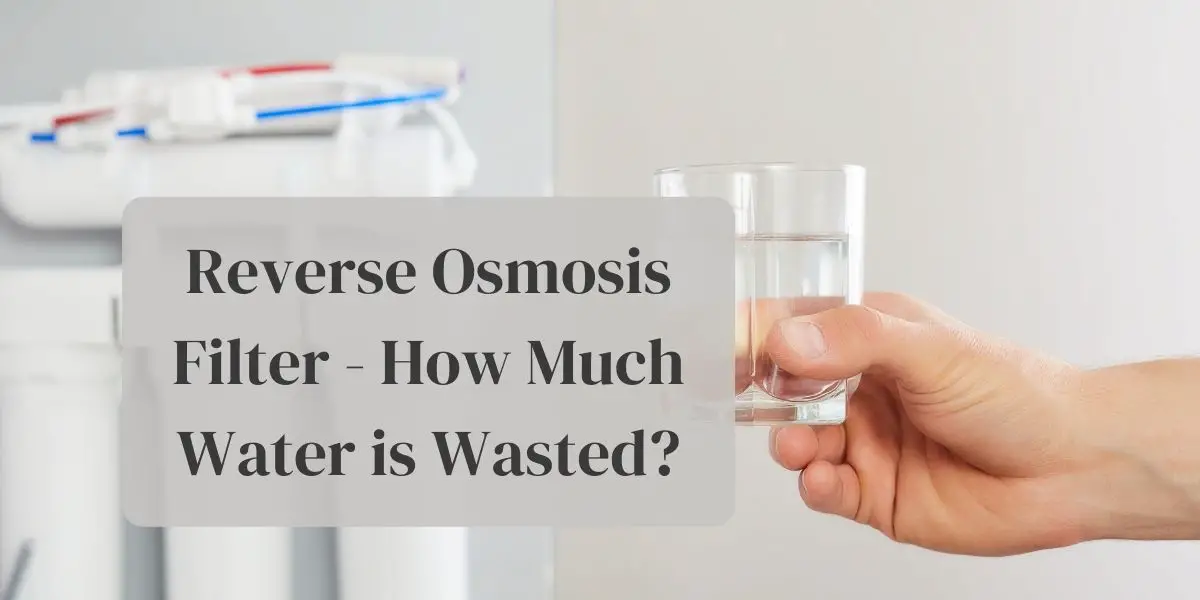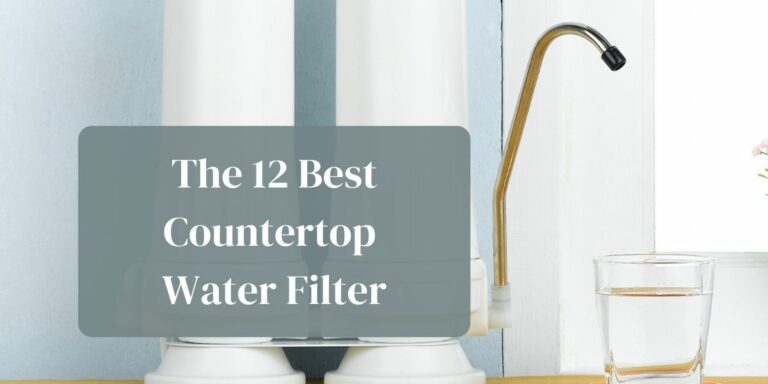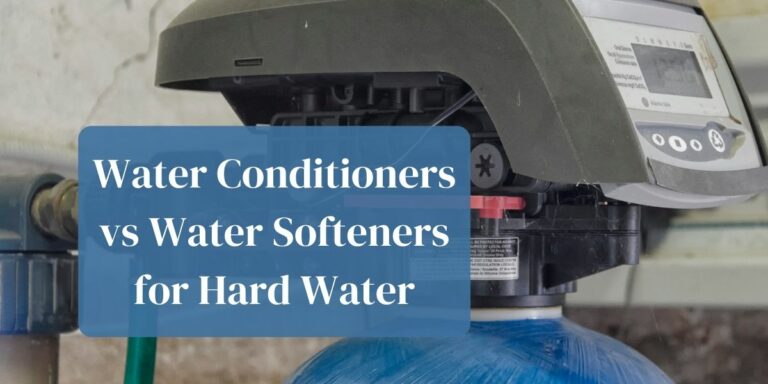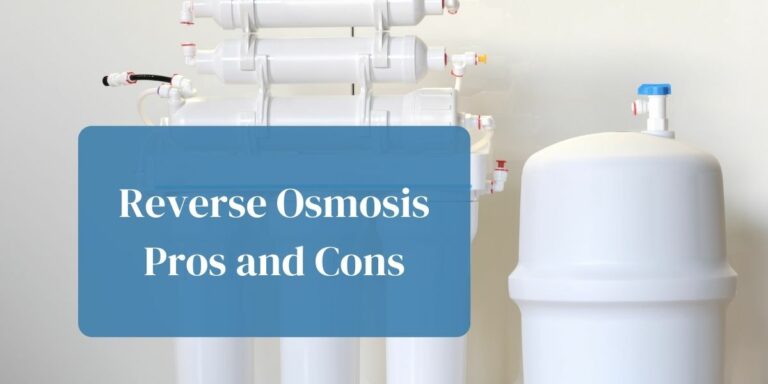Ro systems are important utilities in many households today. For reverse osmosis to take place, the system uses a cold water line that goes through a filter. In a convectional water filter, the impurities get trapped in a media, but in a reverse osmosis process, there must be water flowing through the membrane to keep it clean.
The unit needs lots of water to carry away the salts too. It eliminates contaminants and gives you healthy filtered water. The only drawback to a reverse osmosis process is the much water it wastes during the process.
The amount of waste water exceeds the amount that the machine purifies. Did you know that 80% of the water that the ro system receives goes to waste? You can only recover 20% for drinking purpose.
Table of Contents
- Why is there waste water in reverse osmosis?
- Can you use reverse osmosis waste water?
- How to reduce waste water from reverse osmosis
- Are zero-waste RO systems any good?
- Conclusion: is RO waste water truly?wasted?
Why is there waste water in reverse osmosis?
If you do the mathematics, for every gallon you get, be sure 4 gallons of water have gone to waste. Here, ‘waste’ means it does get into your taps for normal use. Unlike some other kinds of water filters that trap contaminants and all the water goes to your pipes, reverse osmosis systems send lots of water to waste.
A reverse osmosis system uses much more water than it produces. As the water flows through it, one stream carries the filtered water to a storage tank while another stream carries the removed pollutants, salts, and minerals down the drain.
Can you use reverse osmosis waste water?
RO water wastage is a serious issue taking into account the global water crisis. This makes it necessary to take effective steps to minimize the wastage. The reason why many overlook the water that goes down the drain is that it contains a lot of contaminants.
The waste water has high levels of Total Dissolved Solids (TDS), including salts and metals, so it is unfit for consupmtion. This does not mean that this water has to go to waste.Here are some tips for using reverse osmosis waste water:
- To flush toilets: Flushing a toilet requires a lot of water. Connecting the waste water pipe to the toilet is a good idea. To eliminate any foul odours, make use of air fresheners.
- Clean your car: Ro waste water make a good alternative to using freshwater to wash your car. When washing your car, ensure that you don’t use a brush to scrub if your water is hard. It could cause the surface to lose its shine.
- Household chores: Instead of using the regular tap water to wash your clothes or utensils, you can use the ro reject water. This will save you some cost on bills.
- Gardening and lawns: Lastly, you can use the waste water in your lawn or vegetable garden. Since it has a high amount of dissolved solids, we recommend doing a trial on your plants or lawn to rule out any negative effects.
How to reduce waste water from reverse osmosis
If you care about the environment, you have a responsibility to minimize the amount of water going to the drain. You can do this by using a more efficient reverse osmosis system in purifying water.
One way of doing this is feeding the discarded water into a second reverse osmosis system. This method will save a quarter of the waste water, and the rest will get wasted. Due to high salt content and organic matter,however, you might find scaling in your pipes.
Adding a permeate pump to your reverse osmosis system might be another viable option. Installing the pump increases the efficiency of your system. The best permeate pumps can reduce water waste by up to 80%.
When looking to buy a reverse osmosis system, consider getting one that has an extension for a pump. Any ro systems work on pressure. Any time the storage tank fills, the pressure triggers the automatic shut off valve.
Automatic shut off valve stops purified water from going down the drain after the reserve tank is full. You need to make sure the shut-off valve is functioning correctly; otherwise, water will continue to flow down the drain. Besides,as a system grows old,more water goes to the drain.
This is because the membrane fills with contaminants and it wastes much water to effectively produce filtered water. Regular replacement of the membrane- every two to three years- is crucial. Once you replace the membrane,the efficiency could improve.
For instance if you replace a membrane after three years, its efficiency will go back to how it performed when the ro system was new . You should also note that as the pre-filters get clogged,the pressure to the membrane reduces and this leads to more waste.
In the same way that reduction in pressure affects performance, water temperature have a similar impact. You have more waste water in winter than summer.
Are zero-waste RO systems any good?
You might find manufacturers of reverse osmosis water filters that claim their systems do not waste water at all. Even when you have installed the best reverse osmosis in your home, many gallons of water go to waste to get only one gallon of pure water.
Low-grade systems can produce as much as 8 gallons of waste water per one purified gallon due to an inadequate membrane among other factors. Significant wastage of water has seen the invention of the Zero waste reverse osmosis systems. These systems do not waste as much waste water like standard systems.
One way that zero a waste system work is by pumping the byproduct of the ro process into the cold water line that feeds the ro system. This system is effective but results in frequent water filter changes and will wear down the system. It forces the system to work harder.
The alternative process is pumping the brine water into the hot water plumbing. The downside to using a system that puts waste water into your hot water line method is that some brine water could find its way into your home water pipes.
Related
Conclusion: is RO waste water truly?wasted?
The truth is that reverse osmosis systems waste water in the purification process. Water that goes to waste is a byproduct of the water purification in the reverse osmosis process. Some people believe that since you can reuse the water, then that’s not waste at all.
However, filters that achieve zero wastage only do so by use of an electric pump which circulates the water back again into the filtration system. This eventually puts your system under undue strain. Your system will wear out faster than normal. You can probably reuse the water as we discussed earlier to minimize the waste.










Does the waste water only run off when the outlet tap is opened or does it run off continually?
Hi Ian,
The water will run off only when the tap is opened.